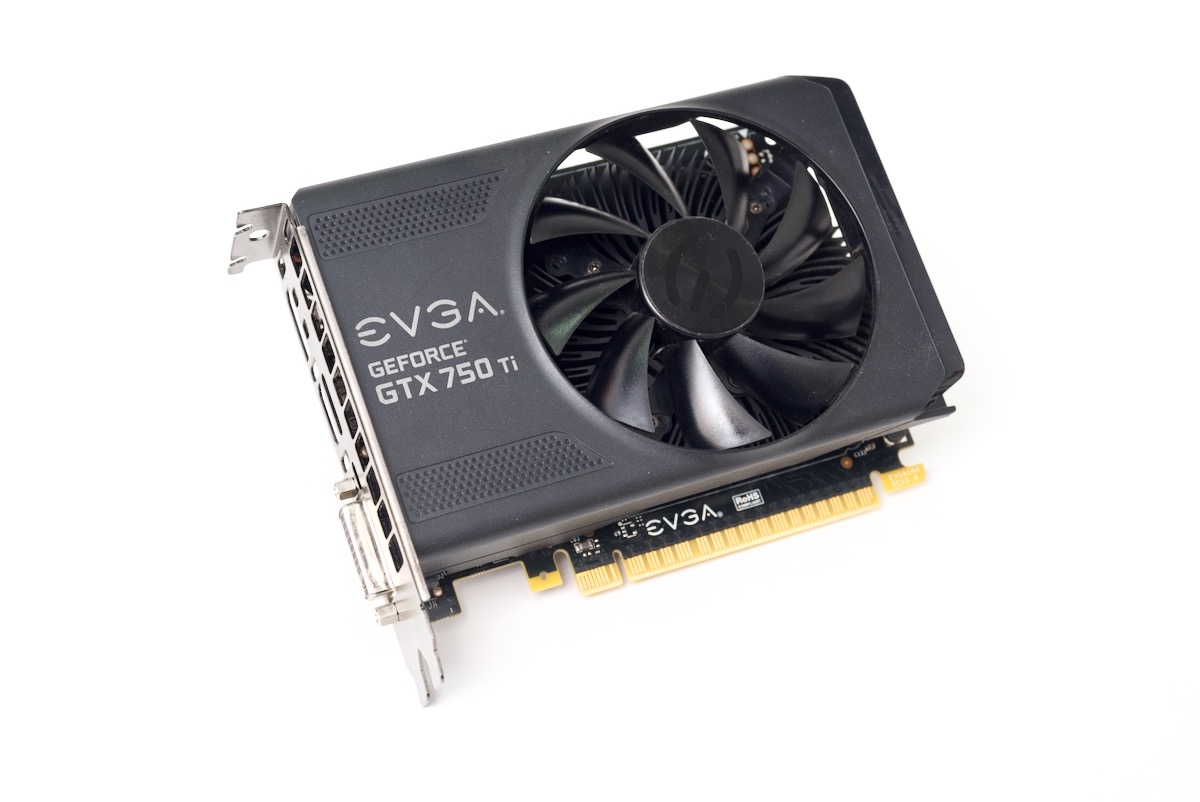EVGA Nvidia GeForce GTX 750 Ti
| CM4 Functionality | Pi 5 Functionality | Driver Required? | More Info |
|---|---|---|---|
| None | None | Yes | GitHub Issue |
Videos Related to this Card
Description and Notes
The GTX 750 Ti is a slightly older graphics card that is supported by both Nvidia’s proprietary driver and the open source Nouveau driver in the Linux Kernel.
It will require a 1x to 16x adapter, or some other means of adapting the 16x-sized card pins into the 1x slot on the CM4 IO Board. You should also supply at least 5A of 12V power to the CM4 IO Board if you’re powering the card through the IO Board itself.
There are two ways to try installing the driver:
Proprietary Nvidia driver
After flashing the 64-bit Pi OS beta to my Pi, I made sure to upgrade everything on it, and install the kernel source, so the Nvidia driver would compile:
sudo apt-get update
sudo apt-get -y dist-upgrade
sudo apt-get install -y raspberrypi-kernel-headers
sudo reboot
After rebooting, if you have X server running (e.g. you are logged in via GUI), you need to log out. If you’re running this over SSH or serial connection, you can quit X server with: sudo systemctl stop lightdm.
Now, download Nvidia’s latest AARCH64 Driver for ARM 64-bit processors, make the downloaded .run file executable, and run it with sudo:
chmod +x NVIDIA-Linux-aarch64-450.119.03.run
sudo ./NVIDIA-Linux-aarch64-450.119.03.run
After a reboot, while the X server was starting, the kernel spat out an error about a kernel NULL pointer dereference with Internal error: Oops: 96000005 [#1] PREEMPT SMP.
Other older versions of the ARM64 driver would fail to even compile, so I gave up on the Proprietary driver, since I have no access to the source code and could not fix it if I wanted.
Nouveau (open source) driver
To get the Nouveau driver loaded, you have to recompile the Linux kernel for Pi OS.
Go to Device Drivers > Graphics support on the menuconfig step, and select the Nouveau driver to install.
If you want to be able to boot the Pi all the way, make sure to blacklist the nouveau kernel module:
sudo nano /etc/modprobe.d/blacklist-nouveau.conf
# Put this inside the file and save it:
blacklist nouveau
Now, after a reboot, you can explicitly load the module and see what happens by following dmesg in another terminal session:
sudo modprobe nouveau
In my case, the entire Pi locks up and requires a hard power reset. Go figure.
See the linked GitHub issue for more details on how I have been debugging this card, including how I logged the kernel output in more detail using an Adafruit USB-to-TTL serial cable.
Buy this Card
If you'd like to purchase this card, it helps me out if you use the following product link:
EVGA Nvidia GeForce GTX 750 Ti
